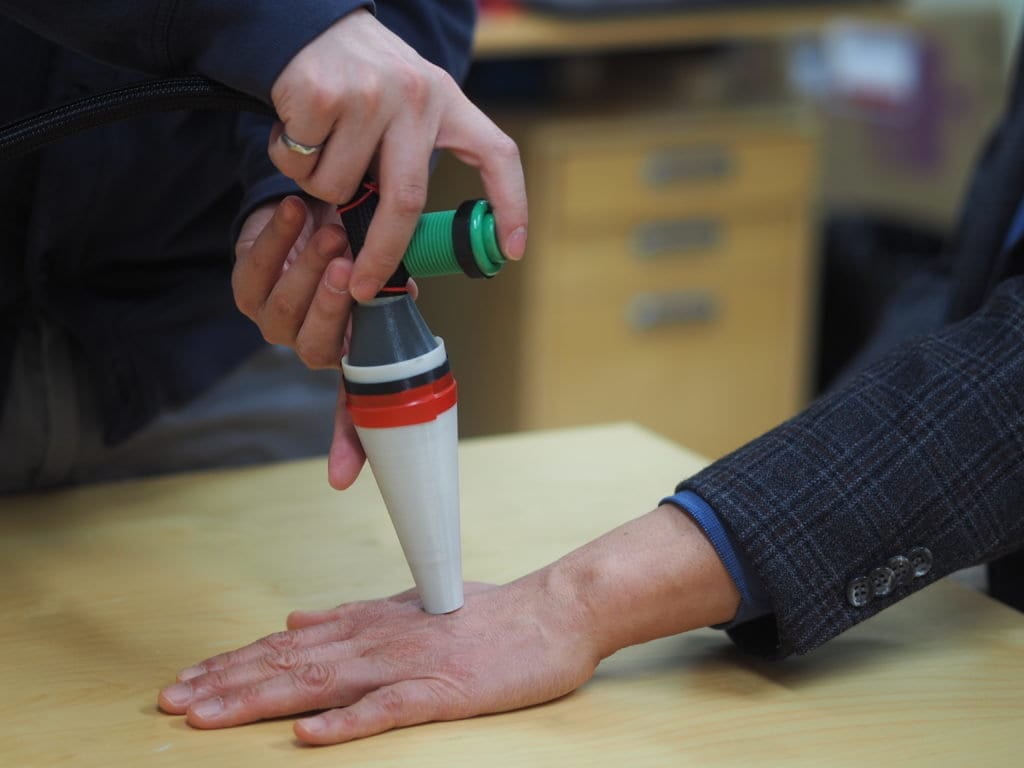
Skin acts as the first line of defense against pathogens and other harmful material from outside the body. Yet this barrier also excludes some beneficial drugs that could treat skin diseases. Now, researchers have taken the first steps in developing a chemotherapy for melanoma that can be “painted” directly on the skin, rather than injected or taken orally.
They report their results in ACS Nano.
According to the Skin Cancer Foundation, melanoma is the deadliest form of cancer because of its tendency to spread, or metastasize, from the skin to other parts of the body. Common treatments include surgery, radiation therapy and intravenous chemotherapy, but these can cause pain or unpleasant side effects. If scientists could find a way to administer chemotherapy through the skin, they could target the treatment directly to the tumor site and possibly avoid side effects. Bingfang He, Ran Mo and colleagues wanted to develop a gel that patients themselves could apply to a skin tumor. But first they had to figure out how to get the therapy to penetrate deep within the skin.
For this purpose, the researchers assembled nanoparticles called “transfersomes,” which consist of a phospholipid bilayer and surfactants that encapsulate drugs or other molecules — in this case, the chemotherapy drug paclitaxel. The surfactants made the particles more deformable so that they could better infiltrate the skin; these compounds also affected the lipid matrix of the skin to help the particles more easily pass. The researchers added a peptide to the surface of the transfersome to further help the particle penetrate the skin, as well as enter tumor cells. To increase the time that the transfersomes persisted on skin, the researchers embedded the nanoparticles into a hydrogel. Then, they painted the gel on tumors of melanoma-bearing mice once a day, in combination with intravenous administration of paclitaxel every other day. After 12 days, the tumors of these mice were about half the size of tumors in mice treated with intravenous paclitaxel alone, suggesting that the transfersome gel helped slow tumor growth.
Learn more: Paintable chemotherapy shrinks skin tumors in mice
The Latest on: Melanoma
[google_news title=”” keyword=”melanoma” num_posts=”10″ blurb_length=”0″ show_thumb=”left”]
via Google News
The Latest on: Melanoma
- Survivors of Early-Stage Melanoma Have High Rates of Fear of Recurrence, Study Findson April 30, 2024 at 10:15 am
The study aimed to improve the understanding of lived experiences and the fear of recurrence among survivors of localized, stage 0 to IIA cutaneous melanoma.
- ‘Game-changer’ cancer jab offers hope of a cure as NHS launches trial of vaccines that ‘destroy melanoma’on April 26, 2024 at 2:33 am
THE world’s first personalised mRNA cancer jab for melanoma is being tested on British patients. The “gamechanger” mRNA jab also has the potential to stop bladder, lung and
via Bing News










